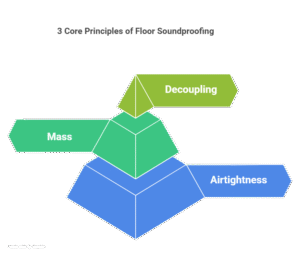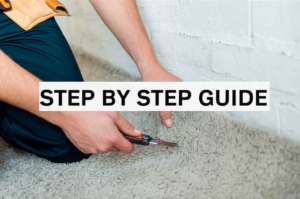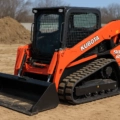If your peaceful evenings are constantly interrupted by footsteps overhead, thumping bass, or even conversations from the apartment below, you’re not alone. Floor noise is one of the most common frustrations in homes, apartments, and offices. Whether it’s impact noise like heavy steps or airborne sounds like voices and TV chatter, unwanted noise can seriously affect your comfort, sleep, and productivity.
Thankfully, you don’t need to tear your home apart or spend a fortune to tackle the problem. This guide will show you exactly how to soundproof a floor using proven methods, from understanding different types of noise to choosing the right materials and techniques for your space.
We’ll break down:
- What causes floor noise (and how it travels)
- The key principles of floor soundproofing
- The best materials like acoustic underlayment, Mass Loaded Vinyl, and Green Glue
- Floor-type specific solutions for wood, tile, concrete, and carpeted surfaces
- Budget tips and DIY fixes that actually work, even for renters
Whether you’re a homeowner, DIYer, builder, or renter, you’ll find simple, practical steps to reduce noise and restore peace. Let’s start by understanding what kind of noise you’re really dealing with.
How Floor Soundproofing Works: Understanding the Noise
Before you pick a product or start ripping up your floors, it’s important to know what type of noise you’re actually trying to block. Floor noise usually comes in two forms, and each one needs a different solution.
1. Impact Noise (Structure-Borne)
Impact noise happens when something physically hits the floor. Think:
- Footsteps
- Moving furniture
- Dropped objects
- Washing machines or treadmills
These sounds travel through the floor structure itself, into the joists, down the walls, and even into the ceiling below. Because impact noise moves through the building’s frame, it’s harder to stop and usually requires something to absorb or interrupt the vibration.
🔹 Common Fixes: Rubber underlayment, acoustic mats, isolation clips, and resilient channels.
2. Airborne Noise
Airborne noise travels through the air, it doesn’t vibrate the floor itself. Examples include:
- Voices
- TV or music
- Barking dogs
- Phone calls
These sounds sneak through cracks, floor gaps, or thin materials, and can even slip through ceiling cavities if the floor isn’t sealed properly. Unlike impact noise, airborne sound is blocked by adding mass or sealing leaks.
🔹 Common Fixes: Mass Loaded Vinyl (MLV), Green Glue compound, acoustical sealant, and thick rugs.
3 Core Principles of Floor Soundproofing

Every soundproofing strategy is based on three core concepts:
✅ 1. Decoupling
This means separating surfaces so sound can’t easily transfer. For floors and ceilings, this can be done with:
- Rubber pads or underlayment between the floor layers
- Resilient channels or isolation clips under the ceiling below
Decoupling breaks the path of vibration so noise doesn’t travel through solid materials.
✅ 2. Mass
Heavier materials are harder for sound to pass through. Adding mass helps block airborne sound.
- Mass Loaded Vinyl sheets (MLV)
- Double flooring layers (like cement board)
- Dense rugs or flooring mats
More mass = better sound blocking.
✅ 3. Airtightness
Even the best soundproofing fails if there are gaps. Sound finds its way through the tiniest openings.
- Use acoustical sealant caulk to seal floorboard edges
- Install threshold seals or door sweeps to block noise from room to room
- Seal around light fixtures, vents, and electrical boxes
Just like air, sound escapes where there’s space. Seal it tight.
Essential Materials for Soundproofing a Floor
Now that you understand how floor noise works, it’s time to choose the right materials. Whether you’re renovating a house, treating a rental, or looking for budget fixes, the key is selecting products that align with the three soundproofing principles: decoupling, mass, and sealing.
Here’s a breakdown of the most effective materials for soundproofing floors, with pros, cons, and use cases.
🔸 Rubber Underlayment
Rubber underlayment is one of the most popular and effective ways to reduce impact noise. It’s placed beneath flooring to absorb vibrations caused by footsteps, appliances, or dropped items.
Use it under:
- Hardwood
- Laminate
- Engineered wood
- Tile (with proper support)
Why it works: Rubber is dense and flexible, making it great for absorbing structure-borne noise.
Examples: UnderBlock™, QuietWalk, and recycled tire rubber rolls.
✅ Best for: Reducing footstep noise and improving Impact Insulation Class (IIC).
🔸 Acoustic Floor Mats & Foams
These soft mats or rolls are designed to sit beneath floors or even directly on subfloors. Some are made of felt, cork, or composite foam layers.
Use it when:
- Installing under floating floors
- Adding a soundproofing layer in DIY projects
- Budgeting for light noise reduction
Note: Foam works well for minor sound absorption but doesn’t block noise as effectively as dense materials like rubber or vinyl.
✅ Best for: Mild sound reduction and added comfort underfoot.
🔸 Mass Loaded Vinyl (MLV)
MLV is a flexible, dense vinyl sheet that adds mass to your floor without adding bulk. It’s excellent for blocking airborne sound.
Installation:
- Roll it out over subfloor or underlayment
- Seal the seams with acoustical tape
- Trim edges tightly against walls and seal with caulk
Why it works: High mass = high sound blocking, especially useful in combination with other materials.
✅ Best for: Blocking talking, TV, music, and other airborne sounds.
🔸 Green Glue Noiseproofing Compound
Green Glue is a damping compound used between two rigid surfaces, like subfloor and a second layer of drywall or cement board. It absorbs sound vibrations and turns them into negligible heat.
Application:
- Spread between two solid layers (e.g., plywood + cement board)
- Used with MLV for layered soundproofing
Note: Requires some construction skill, but is highly effective when done right.
✅ Best for: Serious soundproofing projects, especially when you’re adding new layers to existing floors or ceilings.
🔸 Carpets & Rugs
Never underestimate a thick area rug. Soft surfaces absorb footfall noise and echo, especially in rooms with hard flooring.
Tips:
- Choose dense, thick pile rugs
- Add a soundproofing rug pad underneath (rubber or felt)
- Cover high-traffic areas, especially in apartments
✅ Best for: Renters or anyone needing quick, non-permanent fixes.
🔸 Acoustical Sealant & Caulk
Even if you install the best materials, gaps will ruin everything. Use an acoustical-grade caulk (not regular silicone) to seal:
- Floor edges
- Gaps near walls or doorways
- Small cracks or air leaks
Popular brands: OSI® SC175, Green Glue Sealant
✅ Best for: Sealing sound flanking paths, essential for airtightness.
How to Install Soundproofing: Step-by-Step Guide

Depending on your access and your budget, you can soundproof either from the floor side (above the noise) or the ceiling side (below the noise). Floor-side solutions are best when you own or are renovating the space. Ceiling-side methods are ideal when the noise is coming from above, like in apartments or multi-family homes.
Let’s look at both.
🛠️ Floor-Side Installation (Above the Noise)
If you have access to the floor where the sound originates, or you’re trying to block noise from reaching the room below, this is your starting point.
Step 1: Remove Existing Flooring (if needed)
- For best results, remove carpet, vinyl, laminate, or hardwood to reach the subfloor.
- If removing isn’t possible (renter situations), skip to rug/underlayment tips later.
Step 2: Clean the Subfloor
- Sweep and vacuum the subfloor.
- Fill any cracks with wood filler or caulk.
Step 3: Install Underlayment
- Lay rubber underlayment or acoustic mat across the entire surface.
- Leave a 1/4-inch gap around walls to allow for expansion.
- Tape seams tightly to prevent shifting.
Step 4: Add Mass (Optional but Ideal)
- For better airborne soundproofing, roll out Mass Loaded Vinyl (MLV) on top of the underlayment.
- Tape and trim MLV around the perimeter.
- Optional: Add a second layer of plywood or cement board on top, bonded with Green Glue for extra vibration damping.
Step 5: Seal the Perimeter
- Use acoustical sealant around all floor edges where sound might escape.
- Seal seams in MLV and any gaps near walls or vents.
Step 6: Replace Flooring
- Reinstall your original floor (hardwood, laminate, tile, etc.).
- For carpet, use a thick underpad below it to maximize impact absorption.
✅ Result: This method significantly cuts both footstep impact noise and airborne sound from traveling below.
🔧 Ceiling-Side Installation (Below the Noise)
If you’re on the receiving end of the noise and can’t modify the floor above, treating the ceiling is your next best option.
Step 1: Install Isolation Clips & Channels
- Attach resilient sound isolation clips (like RSIC-1®) to ceiling joists.
- Mount resilient channel or hat channel into the clips — this creates a decoupled ceiling surface.
Step 2: Add Insulation Between Joists
- Fill ceiling cavities with dense mineral wool or fiberglass insulation.
- This absorbs airborne sound before it travels down into your room.
Step 3: Attach a New Ceiling Layer
- Mount drywall or cement board onto the resilient channel (not directly into joists).
- For better damping, apply Green Glue between two layers of drywall.
Step 4: Seal the Perimeter
- Use acoustical caulk around the entire ceiling edge, light fixtures, vents, and electrical boxes.
- This prevents sound leaks (flanking paths).
✅ Result: You won’t eliminate all noise, but this approach drastically reduces both vibration and airborne transmission from above.
For Renters or Light DIY Projects
If you can’t tear into floors or ceilings, try these quick-win strategies:
- Lay dense area rugs with rubber pads underneath.
- Place bookshelves or wardrobes along shared walls to absorb sound.
- Use anti-vibration pads under appliances like washing machines or speakers.
- Seal door gaps with weatherstripping and bottom sweeps.
Try interlocking foam mats for kids’ rooms or gyms.
Best Soundproofing by Floor Type
Every floor material behaves differently when it comes to noise. Concrete is dense but transmits impact. Wood is lightweight and lets both types of sound through. Carpet helps — but not as much as you’d think.
Here’s how to soundproof the most common types of floors:
🧱 Concrete Floors
Concrete has high mass, which makes it naturally good at blocking airborne noise. But it transmits impact noise easily, especially in multi-story buildings.
What Works:
- Thick rubber underlayment: At least 6mm or more (like recycled tire mats)
- Mass Loaded Vinyl: Adds extra sound barrier above the slab
- Floating floors: Decoupling the flooring from the slab reduces vibration
Tips:
- Even a 6-inch concrete slab can transmit footsteps if it’s not decoupled.
- Use Green Glue between two rigid layers (e.g., cement board over concrete) for high-performance sound dampening.
✅ Best for: Apartments, condos, commercial spaces with concrete floors.
🪵 Wood Floors (Joist-Based or Floating)
Wood floors are common in homes and are usually built over joists, which creates air cavities that amplify both impact and airborne noise.
What Works:
- Rubber underlayment directly over the subfloor
- MLV + Green Glue sandwich layer before laying finished flooring
- Resilient channel and clips on the ceiling below (if floor access is limited)
Tips:
- Don’t rely on felt pads or cork alone, they help a little but not enough for real soundproofing.
- If replacing flooring, float engineered wood over acoustic layers for both mass and decoupling.
✅ Best for: Homes, upper-story bedrooms, and areas with hollow floor framing.
🪵 Wood Floors (Joist-Based or Floating)
Wood floors are common in homes and are usually built over joists, which creates air cavities that amplify both impact and airborne noise.
What Works:
- Rubber underlayment directly over the subfloor
- MLV + Green Glue sandwich layer before laying finished flooring
- Resilient channel and clips on the ceiling below (if floor access is limited)
Tips:
- Don’t rely on felt pads or cork alone, they help a little but not enough for real soundproofing.
- If replacing flooring, float engineered wood over acoustic layers for both mass and decoupling.
✅ Best for: Homes, upper-story bedrooms, and areas with hollow floor framing.
🧶 Carpeted Floors
Carpet already absorbs some impact noise, but alone, it won’t stop airborne sound or vibrations from traveling through the floor.
What Works:
- Thick carpet padding (choose dense rubber or fiber blend, not cheap foam)
- Add MLV beneath the carpet pad for layered mass
- Use resilient clips and insulation in the ceiling below for extra control
Tips:
- Choose cut-pile or high-pile carpet, it absorbs more sound than low-profile loop styles.
- Combine with rug pads to improve noise blocking even more.
✅ Best for: Bedrooms, rentals, or quick upgrades with minimal renovation.
DIY Soundproofing Tips & Budget-Friendly Tricks

Not everyone can rip up floors or install soundproof ceilings, and that’s okay. Whether you’re a renter, living in a shared space, or just working with a tight budget, there are plenty of simple fixes that reduce floor noise without construction.
These DIY soundproofing ideas won’t give you studio-level silence, but they can make a noticeable difference in daily comfort.
🧺 1. Lay Down Heavy Area Rugs
Rugs are one of the easiest and most renter-friendly soundproofing tools. A thick rug reduces impact noise, especially on hardwood or tile floors.
Make it better:
- Add a dense rubber pad underneath
- Cover high-traffic walkways and noisy rooms
- Layer two rugs for extra damping
🔹 Works best for: Footsteps, dropped items, minor echoes
🛋️ 2. Rearrange Your Furniture
Large, dense furniture absorbs sound and blocks it from bouncing around the room or traveling through walls and floors.
Smart moves:
- Place bookcases or wardrobes against shared walls
- Fill empty corners with soft chairs or floor cushions
- Stack soft storage bins or boxes in echo-prone areas
🔹 Works best for: Reducing echo and softening room acoustics
🧻 3. Use Soft Mats or Interlocking Foam Tiles
Ideal for gyms, playrooms, or kitchens, foam tiles are easy to lay down, move, or remove. While they don’t block sound completely, they absorb footstep impact and reduce clatter.
Where to use:
- Below kids’ play areas
- Under desks or workstations
- Beneath treadmills or workout machines
🔹 Pro tip: Choose high-density foam (1/2″ or thicker) for better impact control
🧰 4. Install Anti-Vibration Pads
If appliances like washing machines, dryers, or subwoofers are causing the noise, isolate them from the floor.
What to do:
- Place anti-vibration rubber pads or mats under the equipment
- Check the feet of the machine, worn-out feet can transmit more vibration
🔹 Works best for: Vibration and mechanical noise transfer
🚪 5. Seal Gaps with Weatherstripping
Sound slips through small cracks just like air. Use soft weatherstripping tape to seal:
- Door frames
- Closet gaps
- Between rooms or hallways
Add a door sweep to close the gap under doors, especially helpful in bedrooms or shared spaces.
🔹 Works best for: Airborne sound like voices and hallway noise
🧯 6. Bonus: Hang Wall Textiles or Curtains
This doesn’t help with floor-to-floor sound, but it does reduce echo inside your space, which can make noise feel less overwhelming.
- Try thick blackout curtains, quilted tapestries, or moving blankets
- Hang fabric panels behind furniture or above beds
🔹 Works best for: Echo and voice bounce inside the same room
🚫 Reminder: Foam ≠ Soundproofing
Many people hang foam panels thinking they’ll block noise. Foam only absorbs echoes inside a room — it won’t stop sound from entering or leaving.
For true soundproofing, you need to add mass, decouple surfaces, or seal gaps. Keep this in mind when shopping or setting expectations.
FAQs: Common Questions About Soundproofing Floors
Still have questions? You’re not alone. These are some of the most common floor soundproofing questions from renters, homeowners, and DIYers, with straight answers.
❓Will carpets or rugs help reduce noise?
Yes, especially for impact noise. A thick carpet or area rug can soften footstep sounds and reduce echo. For better results, use a dense underpad beneath the rug. However, carpets won’t block airborne noise (like talking or TV) unless combined with added mass or sealing.
❓Is construction necessary to stop loud footstep noise?
In most cases, yes. Impact noise (like heavy walking or kids running) travels through the structure of your home. To truly stop it, you need to absorb the vibration, which usually involves adding rubber underlayment, decoupling materials, or building a floating floor or ceiling.
❓Can I soundproof a floor without removing it?
Yes, to an extent. You can lay down:
- Heavy area rugs with rubber pads
- Mass Loaded Vinyl with carpet over it
- Interlocking foam tiles in noisy zones
While not as powerful as full underlayment systems, these options can noticeably reduce sound and are great for renters.
❓Does foam stop sound from coming through the floor?
No. Acoustic foam panels are for echo reduction inside a room, not for blocking sound between floors. To block noise, you need dense materials like MLV, rubber, or drywall, plus airtight seals.
❓What’s the difference between IIC and STC?
- IIC (Impact Insulation Class) measures how well a floor blocks impact noise, like footsteps.
- STC (Sound Transmission Class) measures how well it blocks airborne noise, like talking or music.
For full soundproofing, you want to increase both IIC and STC ratings by using the right combination of materials.



